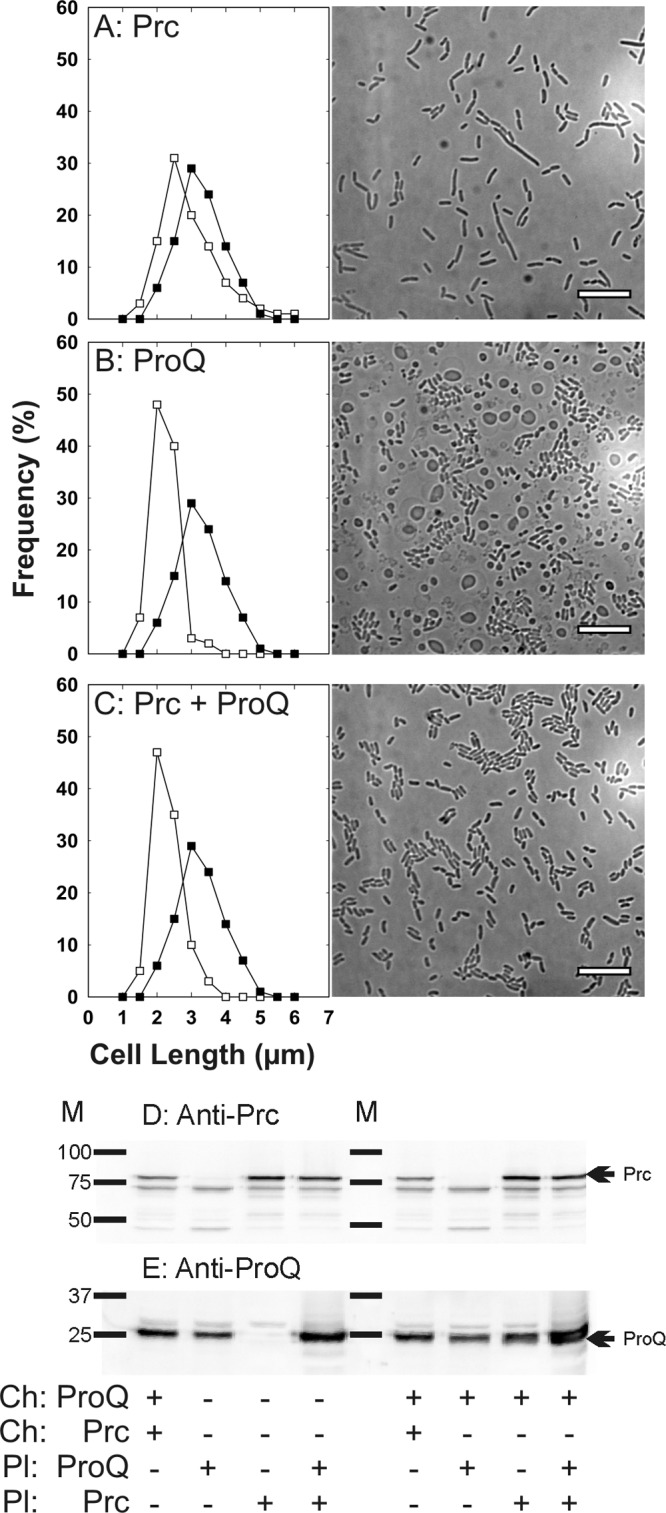FIG 7.

Complementation of Prc- and ProQ-deficient E. coli strains with plasmids carrying genes for Prc and ProQ. Bacteria were cultivated in MOPS medium supplemented with 250 mM NaCl (0.75 mol kg−1) to late exponential phase as described for transport assays (25) (A to C) The bacteria were visualized by light microscopy (see Materials and Methods). Cell length distributions and representative light micrographs are shown for WG1119 pCK3 (restoring Prc but not ProQ; open squares) A), WG1119 pDC77 (restoring ProQ but not Prc; open squares) (B), and WG1119 pDC77 pCK3 (restoring ProQ and Prc; open squares) (C) in comparison with WG1119 (lacking ProQ and Prc; closed squares) for all cases. Bars, 10 μm. (D and E) An aliquot of the cell extract from each culture (15 μg of protein) was analyzed by Western blotting to detect Prc (D) or ProQ (E). Strain RM2 (proQ+ prc+) was included to illustrate the levels of ProQ and Prc attained when each is encoded by its chromosomal gene. To test the levels of expression of these proteins from the plasmid-borne genes, plasmids pCK3 (for Prc) or pDC77 (for ProQ) or both were introduced to strain WG1119 (which otherwise lacks both proteins) (left lanes), or the same plasmids were introduced to strain WG703 (which otherwise lacks Prc but not ProQ) (right lanes). M, molecular weight markers; arrows, locations of ProQ and Prc.
